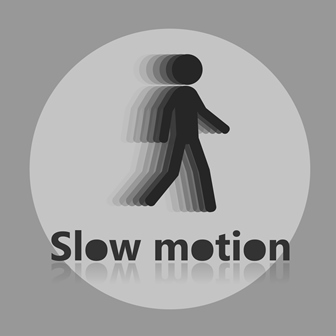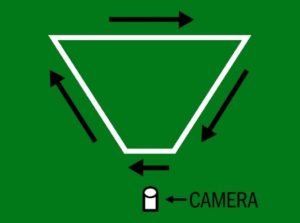Slow motion video (Smart Phone) analysis is under-utilized, & under-valued

Being an old Physical Therapist I have had the good fortune of being around to observe significant changes and advances in the technology available to perform motion analysis. When I began analyzing the gait of runners many years ago, I used analog video cameras which required large VHS tapes and separate VCR playback units. The time delay between recording and analyzing was frustrating. The storing of video tapes was expensive and cumbersome. The retrieving of previous video data was frustrating and very time consuming. Despite these challenges and barriers, the benefit of having slow motion video available for analysis was significant in terms of accuracy and reliability of analysis of movement.
With the development of digital video, computer software, miniaturization of hardware, and decreased cost of data storage, cloud storage the ability to perform quality slow motion analysis is available in our back pocket. The technology improvements addressed many of the previous challenges and barriers, but now there are new challenges and barriers.
A downside of digital video is that in addition to learning the intricacies of analyzing human movement therapist need to learn how the convolutedness of computer software. A whole new set of challenges arises regarding privacy of data.
Recently, I have had the opportunity to teach continuing education courses to Physical Therapist on the process of gait analysis and gait training for painful musculoskeletal conditions. When I survey the course attendees about 5% of the attendees report they are using slow motion video technology readily available in their back pocket in their clinical practice. A recent investigation by Craig Hensely PT of Northwestern U Medicine found that for Board Certified Orthopedic Therapist approximately half used slow motion video technology in their practice. However, 91% used this technology for less than 25% of their patients. In my opinion slow motion video analysis of movement is under-utilized valuable technology. Why? What are the barriers? There is value in recording, analyzing, storing and retrieving video data of movement that is not being fully utilized in healthcare.
How to do slow motion video analysis
There are four steps involved in using slow motion video analysis of human movement. Each step has considerations, challenges and barriers that need to be addressed. The four steps are recording movement; analyzing the movement; storing the video data; and retrieving the video data.
Considerations/challenges/barriers for video recording human movement:
- Obtain patient’s signed permission to record and photograph - “Photo & videos taken during evaluation & treatment will be used as educational tools. By signing below I consent to the use of the photos & videos in a professional manner”
- Select camera – dedicated clinic camera/tablet; therapist’s smart phone; and/or patient’s smart phone. If therapist’s phone is used may need to delete video data file after analysis unless patient’s signed photo consent is obtained.

- Visualize expose key body parts, ask patient for permission to visualize the beltline/waistline (clothing contrasting color shirt and pants), and skin (popliteal) crease on the back of the knee. Patients with foot pain need to visualize and record both barefoot and shod gait
- Staging – arrange so the light source is behind the camera. Frame patient from head to toe. Avoid recording other patients in the background.
- Choose treadmill and/or over ground gait
- If recording video outdoors arrange to have place in shade so that recording can be seen
- Decide to record in regular speed and/or in smart phone camera slow-motion setting. Recording in slow motion setting requires a lot more data for storage
- Verbally record on video file key client demographic and intervention data
- Obtain at least two views (sagitta)l from both front and back, and (coronal )l from both right and left side of client to account for parallax of using a monocular camera. This can be accomplished by having client ambulate a triangle with patient turning/changing directions with 60° turns.

- Alternatively, right side left side views can be obtained by having camera fixed and subject turning 180° and walking/running back and forth relative to the camera. A more sophisticated approach is mounting the camera on a rolling walker or baby jogger and the camera moves parallel with the patient.
- When measuring sagittal plane joint range of motion, it is important to have camera perpendicular to the individual
- Patient needs to move fast enough and/or long enough to elicit gait deviation and/or pain.
- Consider recording video while client is performing standardized gait outcome measures (gait velocity 14 m walk; TUG; 6-minute walk test; 40m (4x10m, functional gait assessment)
Use of smart phone video slow motion video analysis of movement can switch from under-utilization and under value to greater utilization and greater value.
Subsequent blog articles I will address the consideration, challenges, and barriers to analyzing, storing, and retrieving video data of human movement.
A on-demand video webinar exploring this topic is available at Plus by Physiopedia entitled “Indications, Benefits, & Barriers of 2D Motion Analysis”
Use this code – “Damien25” for a 30% discount to access this webinar as well as the more than 500 continuing education webinar courses available at Plus by Physiopedia. This is the link http://bit.ly/DAMIEN25 with the 30% discount code embedded.
Damien Howell Physical Therapy – 804-647-9499 – Fax: 866-879-8591 At-Home, At Office, At Fitness Facility – I come to you, I do home visits Damien@damienhowellpt.com

